Are you looking for a contractor?
Submit our quick form and get quotes now!
Table of Contents
7 min read
The Importance of a Well-Ventilated Home


7 min read
The Importance of a Well-Ventilated Home
InsulationThe Importance of a Well-Ventilated Home
Most, if not all, homes are well insulated. This insulation exists to keep the heat within the home during the winter months, significantly reducing heat loss. In order to be well insulated, a home should be relatively airtight as to block the outside air from permeating inside.
While blocking air from the outside is important to keep your home thermally comfortable, this can create an environment where the harmful airborne pollutants and moisture flourish. This makes proper ventilation something you cannot live without. We have prepared this guide to help inform you of the importance of a well-ventilated home and what your various options are.
How does the ventilation work?
Essentially, ventilation is the exchange of indoor air for fresh outdoor air. Every day, airborne particles are released around your home, such as the gases from your stove or a fireplace. Other air contaminants like formaldehyde, radon and other volatile organic compounds (VOCs) can lead to health problems in poorly ventilated spaces.
These particulates contribute to poor air quality which is especially the case in ill-ventilated spaces. Moreover, an airtight home can keep moisture locked inside, leaving your home open to mould growth which can destroy your insulation and, if untreated, even cause structural damage. Beyond just health and comfort, ventilation is an important part of an energy efficient home, helping you save on your electricity bill by wasting less electricity. This is due in large part to the reduction in humidity levels around the house which mean less use of the cooling systems in your home that translates directly into energy savings.
Types of home ventilation
There are three ways to help ventilate your home:
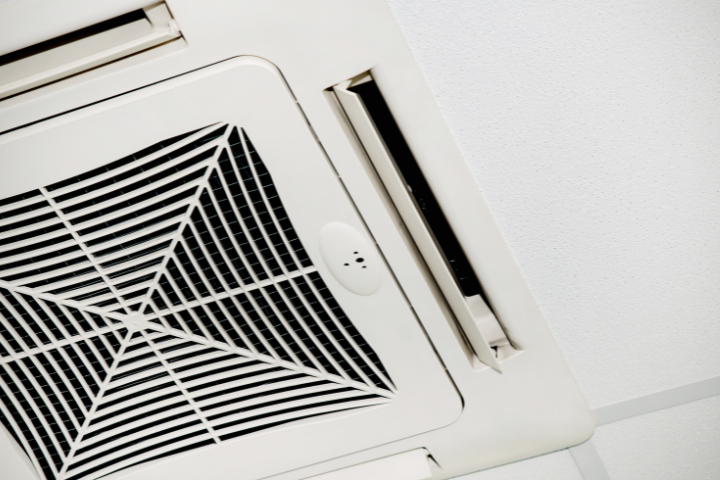
Source: Canva
Natural ventilation
This method of ventilation works by using existing openings such as windows and doors in order to circulate fresh air throughout the home. Natural ventilation is uncontrolled and while, traditionally, it was the most common method, with today’s technology this approach is less popular among homeowners with a proper ventilation budget.
The biggest drawbacks to natural ventilation are the fact that it is unpredictable and uncontrollable: air flows are up to the breeze. Moreover, it is highly unlikely that you’ll wish to keep your windows open during a storm. For those with central heating and/or cooling, you will want to engage natural ventilation strategically so as not to deeply impact the average temperature of your spaces.
Spot ventilation
This type of ventilation is based on controlling the air movement in localized spots within your home, using exhaust fans to move the stale and moist air outside. Typical examples of spot ventilation are a bathroom exhaust fan and range hoods above stoves.
Since there are often fewer ventilation spots throughout the house, this method is used alongside natural ventilation to effectively push the stale air out. Some homeowners may not find the combination of these two methods to be adequate for their needs even when put in place simultaneously.
Whole-house ventilation
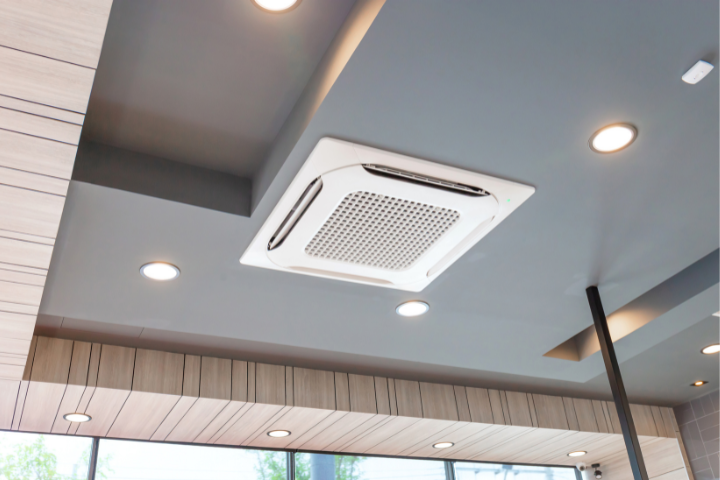
Source: Canva
This is by far the most effective way to ventilate your home but also the most mechanically intensive. While also the most comprehensive ventilation solution, just like its name, this method ventilates the whole house. Using multiple fans and an intricate duct system, a whole-house set-up provides uniform ventilation all over the home.
There are four kinds of whole-house ventilation systems:
1. Exhaust ventilation systems
This system works by depressurizing your home and is the least expensive to install. In essence, when the air is exhausted, fans create negative pressure which forces outside air in through vents or leaks in the house’s shell. These systems function very well in cold climates but perform poorly in hot and humid climates. Moreover, they can bring pollutants into the living space, a major drawback for those invested in good air quality. Lastly, exhaust ventilation systems can significantly increase heating and cooling costs.
2. Supply ventilation systems
This type of systems sucks air from outside in order to create positive pressure within your home and to force the air out through vents. The benefits of this type of system are that they are relatively inexpensive and simple to install, while also allowing for better control than exhaust ventilation systems.
Other advantages of supply ventilation systems are that they help minimize pollutants and can even help filter pollen and dust for those with debilitating allergies. While these systems perform well in warmer climates, moisture problems can occur in colder climates. Unfortunately, the energy required to power a system of this scope will lead to increased heating and cooling costs.
3. Balanced ventilation systems
A balanced system doesn’t use pressure. Instead, it permits equal amounts of fresh air to enter while pushing out the polluted air. This system works with two ducts and two fans in order to bring in the right quantity of fresh air and exhaust in the same amount. Typically, a balanced ventilation system works best when supplying fresh air to where you spend the most time, usually the bedroom and family rooms.
A major advantage is that they operate effectively in all climates, making it a solid choice for Canadians from coast to coast. This type of ventilation set up will also cost more as a result of the multiple parts.
Besides the initial cost, the downsides to the balanced option are that it will not remove moisture from the incoming air which can ultimately lead to increased heating and cooling expenditures.
4. Energy recovery ventilation systems are the last and most comprehensive type of ventilation structure

Source: Canva
Essentially, they provide controlled ventilation while also reducing energy loss. This is achieved through the transfer of heat from the warm inside air, which is exhausted, to the fresh air coming into your home. In the warmer months, the opposite happens, with inside air cooling the warm air supply from outside.
Two types of these systems exist: energy recovery ventilators (ERV) and heat recovery ventilators (HRV). Both systems are fairly similar, being comprised of a heat exchanger and multiple fans. The major difference between HRV and EVR is that HRVs only transfer heat energy while the EVRs transfer some water vapour along with the heat energy. This makes EVRs more appealing for warmer months, as they transfer some of the vapour in the incoming air into the air being expelled.
If you happen to use an air conditioner, this option offers you better control over the relative humidity in your home as compared to HRVs. Unfortunately, there are some big downsides associated with these types of ventilation systems. First off, energy recovery ventilation systems are quite complex which means initial installation and maintenance costs will be higher than the other options. This also means that it may be difficult to find a contractor with experience installing them.
All of that translates into a ventilation system that requires more maintenance than other options. Lastly, those in cold climates will need to protect their systems against freezing and frost buildup.
Using at least one of these methods to ventilate your home will make a significant difference for rooms that are constantly filled with stale air. Upon opening your home up to proper ventilation you'll notice a reduction in dust and other allergens right away and you can breathe more easily knowing your home is one step closer to being energy efficient.
Remember, jobs of this nature that require structural modification should always be carried out by licensed professional contractors who are well experienced in ventilation work.
Get 3 renovation quotes for your home ventilation project
RenoQuotes.com can help you get quotes for your ventilation project. If you submit your project to us, we’ll put you in contact with top-rated contractors. Fill in the form on the homepage (it only takes a few minutes), and you will get estimates from trusted professionals.
Dial 1-844 828-1588 to speak with one of our customer service representatives
Last modified 2023-11-27
Looking for something else?
Related articles
The latest industry news, interviews, technologies, and resources.

RenoQuotes.com • 07 Nov 2023
If there’s one thing to check prior to purchasing or renting a home, it has to be the humidity levels. Not only are high humidity levels a health hazard, but they can definitely cut down the service life of a structure. Ideally, humidity levels should be between 40 and 50%. Anything above this limit will cause a proliferation of bacteria, mould, and dust mites.
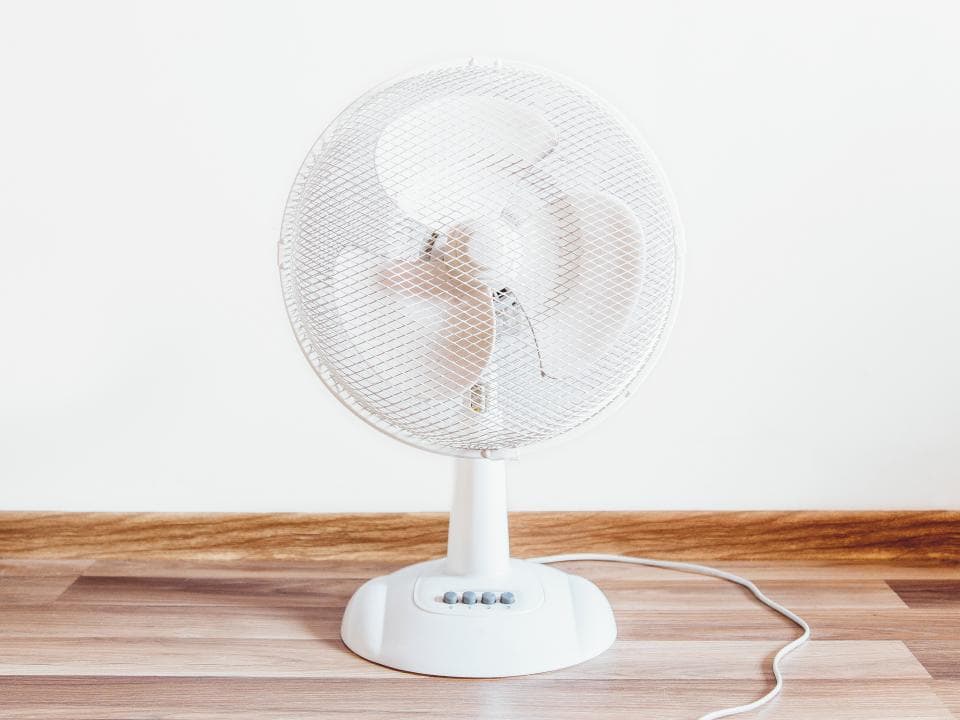
Cynthia Pigeon • 07 Nov 2023
During summer heat waves, many dream of escaping, somewhere, anywhere North to flee the intolerable heat and humidity. However, this solution is not always tangible, therefore, there are various tools and apparatuses that can help you create a better, more comfortable home.

Amanda Harvey • 07 Nov 2023
The onset of cold brings with it the anticipation of a high heating bill to keep everyone inside your home warm and comfortable. To avoid this situation and limit the cost of your heating bill, it’s essential to think of effective ways to reduce this bill.
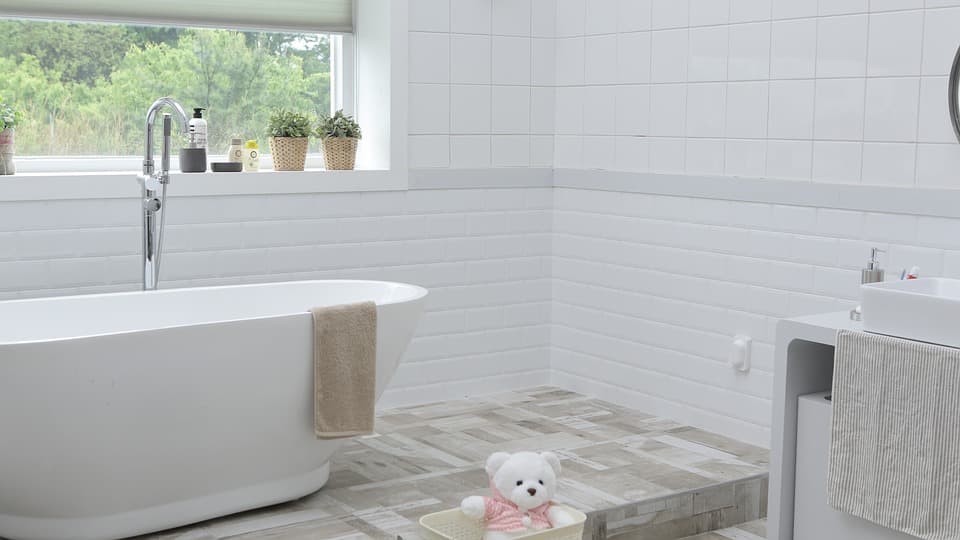
Léa Plourde-Archer • 07 Nov 2023
If there is one question that concerns us from the beginning of a bathroom renovation project, it is certainly the price. This data is essential to determine the range of materials you will purchase as well as the extent of the work.
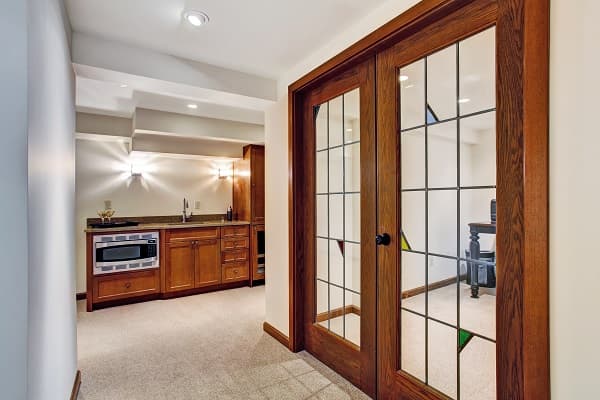
RenoQuotes.com • 07 Nov 2023
If you’re looking to let a little bit of light in between two otherwise dull or dingy rooms, or you’re looking for an alternative to the classic sliding door, then you might be in the market for French doors. These doors can be a beautiful addition to both classic and modern home décors.